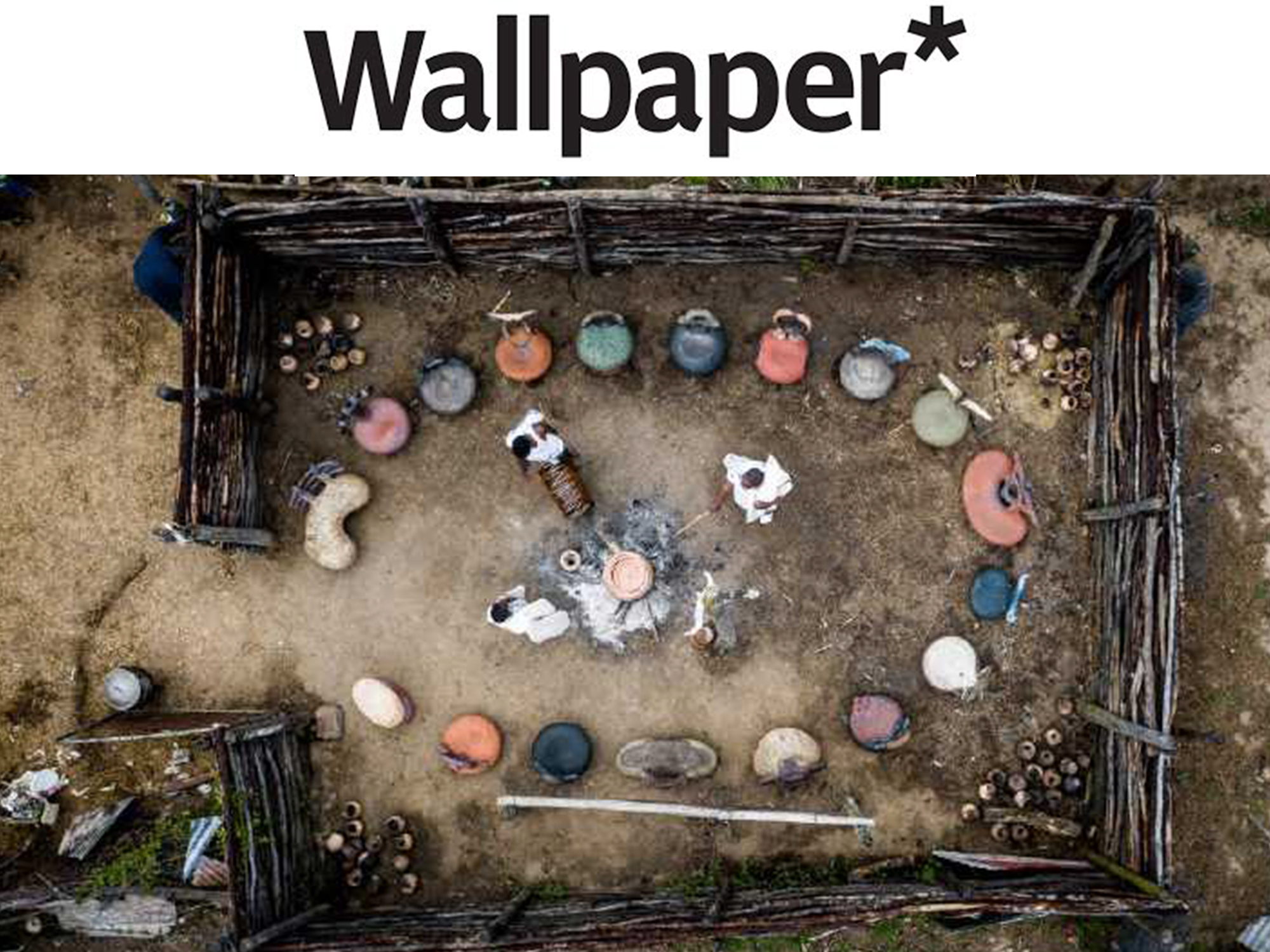By Rosa Bertoli
Friedman Benda presents Andile Dyalvane’s ‘iThongo’, a project featuring clay sculptural seats and vessels created as an homage to his ancestors and Xhosa culture.
Hailing from Eastern Cape, Dyalvane is one of the most prominent South African creatives working today. His medium of choice, clay, is used expressively throughout his oeuvre, developing a deep connection to his native land and the Xhosa culture of his family and ancestors.
Andile Dyalvane’s ‘iThongo’: a collection driven by dreams of ancestors
‘My intention with developing an extended body of work under the title “iThongo” is to highlight a gathering of dreams, seated in the soul, held by the spirits of our ancestors,’ says the designer. ‘The language of dreams is symbolic and therefore realised as uyalezo, messages from our ancestral spirits.’
‘iThongo’ means ‘ancestral dreamscape’ in Xhosa, and the title refers to the medium through which messages are traditionally transmitted from ancestors. The collection comprises a series of sculptural clay stools, chairs and benches, arranged in a circle as they would be during a traditional Xhosa ceremonial gathering, with a fire hearth and herbal offerings at the centre.
Through his work, Dyalvane is commited to preserve ancestral Xhosa knowledge, cultural traditions and language. ‘Whenever I start working in my studio, I call to my ancestors,’ explains Dyalvane. ‘It’s a way of calling the spirit to be amongst us all in the space in order for me to get clarity as to what it is that they want me to communicate.’
Each piece is defined by a large base and expressive sculptural back rests, whose shapes were inspired by pictograms or glyphs representing words that are important in Xhosa life – from entshonalanga, meaning sunset, to izilo, the word representing totem animals. Dyalvane also selected words and concepts that relate to the natural world and touch upon universal human themes.
The designs take cues from Dyalvane’s memories of traditional African artefacts, and the low design of the seating references the earth as ‘an ancient portal for ancestral communion’. The recurring circular shapes also have an important meaning in Xhosa culture, the designer explains: circular geometry is believed to facilitate a free exchange of energy in Xhosa spiritual practices.
In November, the collection travelled to Dyalvane’s rural homestead in Ngobozana, Eastern Cape, so that his family and community could see it ahead of an exhibition at Cape Town’s Southern Guild, and before it was shown in New York. The trip is documented through a short film, and the project features collaborations between Dyalvane and local artists. Poet and traditional healer Sisonke Papu wrote about Dyalvane’s use of symbols for the exhibition catalogue, while sound healer and musician Nkosenathi Ernie Koela produced a musical composition mixing traditional instruments and sounds created by the pieces themselves. Textile artist Onesimo Bam created a collection of hand-painted indigo garments for the ceremonial presentation of his work to his village, and to gift to his elders.
‘From the village to the gallery, the work is carrying the energy and essence of my home, of my ancestors,’ says Dyalvane. ‘The manure, and the smoke, and the dung that you see and smell and sense, is the essence that makes the work.’
Watch Here: Andile Dyalvane’s ‘iThongo’ travels to Ngobozana, Eastern Cape










